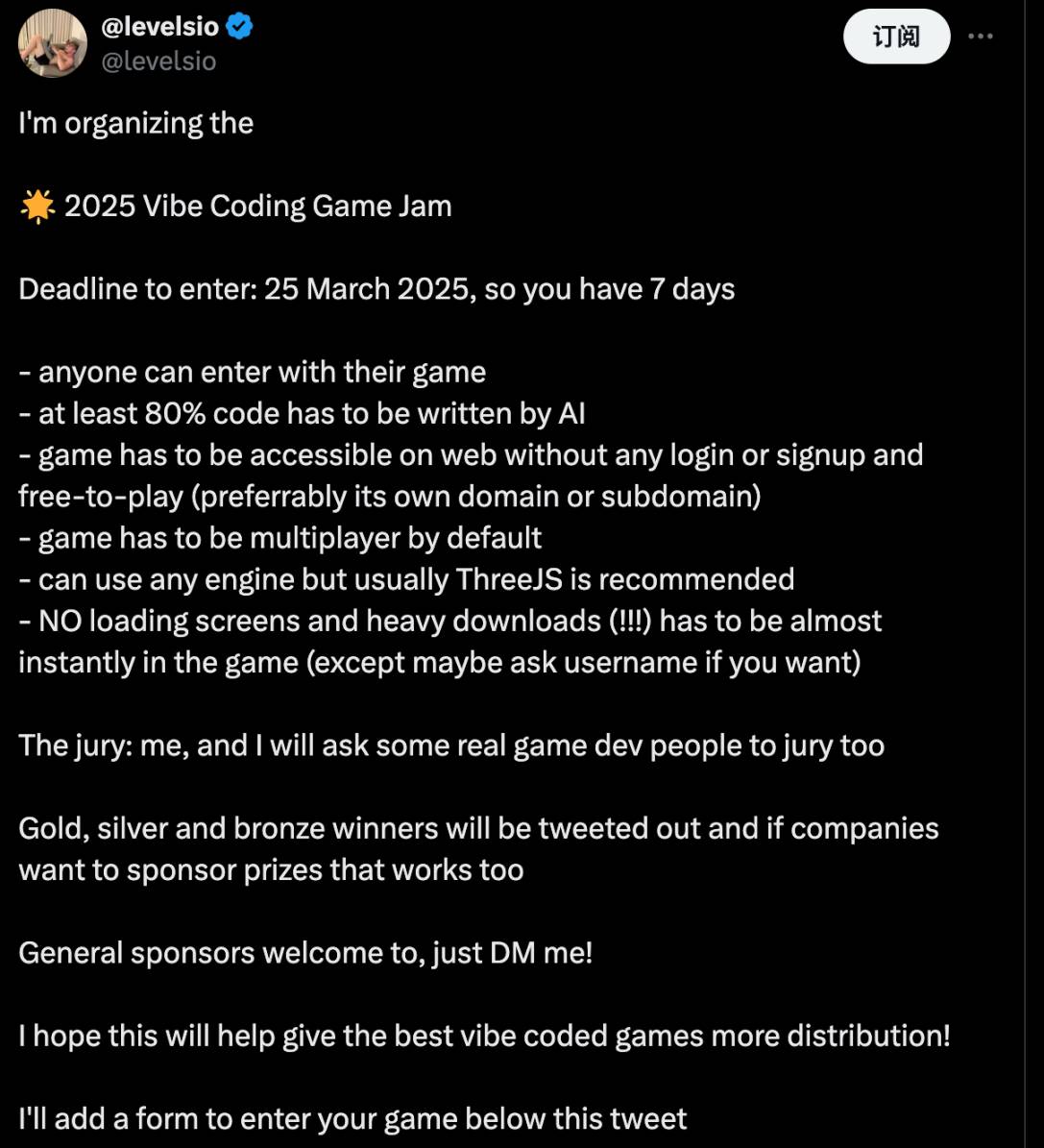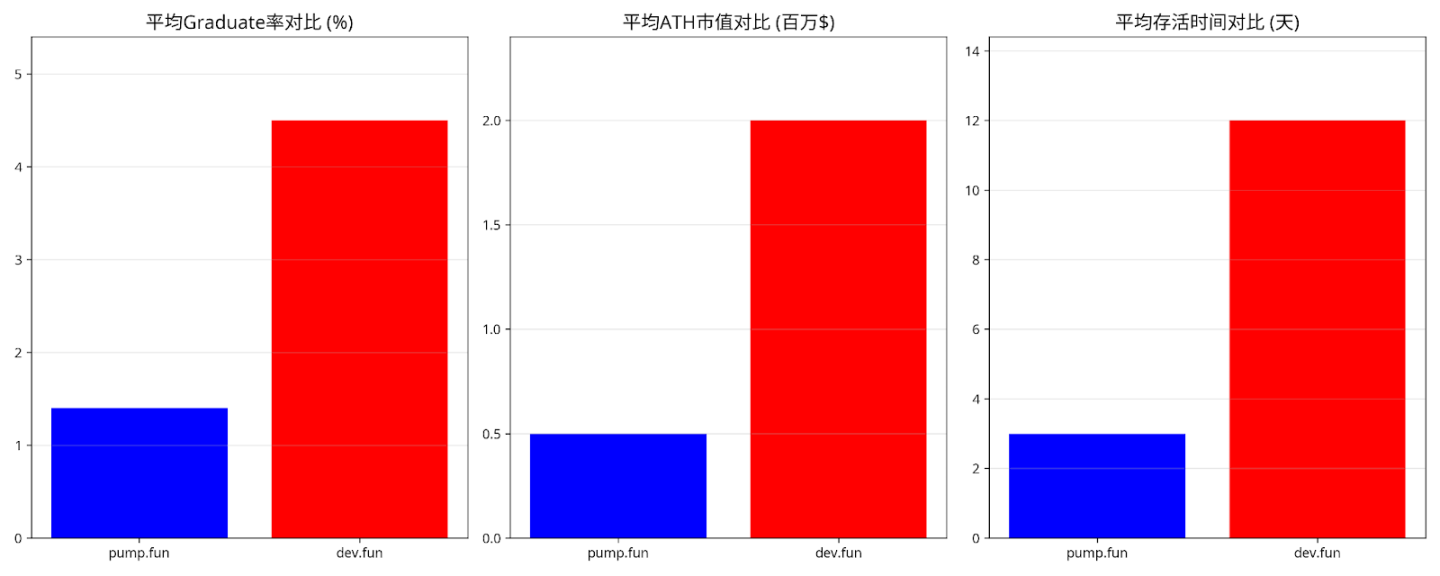Memeapp is a category of applications based on AI-generated app capabilities, lightly integrated with Crypto, and designed for issuing assets. Some people currently refer to it as "APP coin."
Written by: Danny @IOSG
What is Memeapp
Memeapp is a category of applications based on AI-generated app capabilities, lightly integrated with Crypto, and designed for issuing assets. Some people currently refer to it as "APP coin."
Users only need to input some descriptions of the app to generate an interactive front end. It combines MCP, pre-built components, databases (blockchain), and cloud (decentralized) for rapid deployment.
MCP stands for Model Context Protocol, which helps AI models connect to external data and tools. It provides an agent access method through the server side, achieving a translator-like effect, allowing AI to interact more conveniently with various tools and data sources without needing to develop specific code for connections. This significantly broadens the capabilities of the agent, resolving issues like data scraping or tool access when using Manus, as the server opens up to the agent in the future.
SendAI released the Solana MCP in the widely used coding agent Cline, enabling the agent to read and write transactions on the Solana chain. This will greatly lower the barrier for AI to write Solana-related applications in the future.

With these capabilities, simple logic applications can be quickly created. AI is still unable to write production-level smart contracts in the short term, and contracts that have been audited and tested over time are hard to be quickly replaced by those written by AI. However, if contract generation becomes possible in the future, it could lead to the creation of Crypto-native applications.
These types of apps have simple functions but exhibit different levels of interest/functionality under different designers, and they carry a strong meme culture attribute. Their prototype has already emerged—links to memecoin websites on Dexscreener.
Currently, Memeapp appears more in the form of interactive websites and mini-games. This has sparked creativity among people. Notable independent developer @levelsio hosted a Vibe coding competition on Twitter. Solana has also launched a similar competition called Vibe Jam.

Why Focus on This Now
The logic of Crypto AI is still based on the development of Web2 AI itself, providing assetization capabilities through Crypto.
So, what is happening on the AI application side in the real world? We see products like windsurf, v0, Bolt, and Lovable are starting a feast of APP creation for everyone (Lovable just received $15M in funding this February). The Aha moment brought by agents like Manus, which have virtual machine and MCP capabilities, has redefined our understanding of software development. The innovation brought by such applications is referred to in English as "Vibe coding," where writing code has transformed from a laborious task into a creative endeavor.

After years of development, the usability of such tools has greatly improved. Products emerging since 2025 are already sufficient to meet demands such as website building, data dashboards, and small games. Unlike auxiliary coding tools like Cursor and Windsurf, Vibe coding products lower the development barrier to zero, allowing users to complete the entire app writing and even debugging through natural language, providing strong customization and cost-reduction capabilities. Subsequently, developing applications has become a "no-permission" model that everyone can engage in.
With the development of technologies like MCP, AI's ability to autonomously acquire data and create code has significantly improved. Although the current technology level still lacks the ability to produce tools with complex logic and practical utility, meme-centric apps are more than sufficient. Therefore, mini-games and data panels are currently quite popular. Software creation is now equivalent to content creation.
Why Combine with Crypto?
The Value Crypto Brings to Memeapp
Solving the Cold Start Problem
Currently, one of the biggest commercialization challenges facing Memeapp is the cold start problem. With the exponential growth of AI-generated applications, the future application market will become increasingly crowded. How to make high-quality apps stand out and accumulate the first batch of users becomes a crucial task. In this context, a fair launch model similar to Pumpfun will provide an ideal solution for Memeapp. This model not only ensures fair participation for initial users but also effectively promotes growth during the cold start phase.
The Challenge of Fragmented Ownership
The low startup and reproduction costs of AI applications have intensified competition. At the same time, the binding of responsibilities and rights between AI application creators and operators is weak, and there is a lack of effective profit-sharing mechanisms. How to incentivize creators for continuous innovation, protect their intellectual property, and reasonably allocate and integrate interests among all parties has become an urgent issue to address. Within the framework of Web3, blockchain technology offers new possibilities for solving these problems.
As an assetized AI-generated application, Memeapp truly brings the concept of IPO into the blockchain, providing a new path for the capitalization of creativity through blockchain technology. This can attract over 5.5 billion internet users worldwide and offer a new value creation and sharing method for the user group that will soon engage with AI. Through blockchain, creators can ensure the transparency and traceability of ownership while fairly sharing the results of their creations globally.

Various on-chain derivative gameplay involving ownership combinations will also emerge without surprise.
The Value Memeapp Brings to Crypto
The innovative interactive experience of user-generated software, especially in the meme field, has a similar disruptive effect to short videos. Therefore, Memeapp is not only an excellent alternative to Memecoin but can also effectively unleash the speculative enthusiasm of Degens.
For example, a Memeapp building activity themed around "morning routine" can spark people's interest and creativity. I believe that the construction of award-winning works will make people curious to explore how these interesting applications are presented.
Essentially, Memeapp fills the gap in the decentralization of asset issuance capabilities. In the early days of the crypto world, only developers who created valuable products were qualified to issue assets to capture the value they created. However, while models like Pumpfun have decentralized the right to issue assets to all crypto users, they have led to excessive chaos and a lack of effective screening mechanisms. P will be rewarded for taking on the initial screening responsibility for asset discovery, but users still need to rely on the background of the token issuer, contract address, Twitter dynamics, and website quality to assess reliability.
This is also one of the reasons why Memeapp demonstrates a healthier and more sustainable industry influence compared to Memecoin. Through a decentralized and more regulated approach, Memeapp can provide users with more certainty, thereby bringing a more positive driving force to the entire crypto industry.
Comparing the launch data of pumpfun, dev.fun launched tokens through pump.fun, and the graduation rate of dev.fun tokens is about 4.5%, significantly higher than the far below 1% data of pump.fun. If we define the duration for which the token price remains above the market cap after the internal launch, the average survival time of dev.fun tokens is about 12 days, far exceeding the three days of pump.fun. Therefore, it can be seen that Memeapp has higher quality and sustainability compared to Memecoin.

Soon, participants in various aspects of the industry will connect everyone, organizations, and ecosystems through building their applications, and the resulting chain reaction will far exceed everyone's imagination.
The founder of Colosseum, who is also an investor in @devfunpump, @crabbylions, created a grants platform named rick through AI, with its token serving as a reward token for quality applications on devfun. This quickly gave rise to a large number of applications themed around rick.
This means that for the crypto industry itself, such platforms can simplify and tokenize all actions and activities in our work processes, completely overturning the way we build the industry.
What’s Next for Memeapp
As the natives gradually appreciate the charm of Memeapp (I believe this will happen soon), Memeapp is expected to evolve into a more powerful APP Coin platform. In the future, it will not just be a simple application but will carry more complex logical contracts, built on AI and Crypto-native infrastructure, driving the upgrade of the entire ecosystem.
AI writing contracts is a direction many teams dream of, but the security of contracts is crucial. Therefore, compared to ordinary Vibe coding platforms, the threshold for AI-written contracts will be higher. Nevertheless, EVM (Ethereum Virtual Machine) platforms are relatively friendly; for example, open-source contract libraries like OpenZeppelin have already enabled AI to easily create basic template contracts. However, once AI can write complex contracts, it will unlock more innovative gameplay, bringing new possibilities to the entire crypto world.
For example, the current token generation model of Pump, including token specifications, bonding curve parameters, internal market size, and liquidity migration methods, is a fixed model. If there were a launchpad where users could interact with AI to write contracts and set different parameters and gameplay, it would unleash endless imagination.
A large number of AI infrastructure lacking use cases will launch similar products. This represents a paradigm shift from transaction-centric agents to application scenario-centric models in on-chain AI.
In the long run, mastering the ability to write contracts will allow AI to further penetrate Crypto. Remember that the two most important organizational structures in blockchain, L2 and DAO, are essentially contracts. Therefore, the concept of universal and fully automated issuance and customization/differentiation of chains that Ethereum has been discussing for years is becoming more tangible.
@Ch40sChain is a pioneer in this direction, built by the team from @NethermindEth. It is worth mentioning that this is a project previously led by the current executive director of the Ethereum Foundation.
In addition to development platforms, content creators around these "software" applications are likely to build two types of organizations:
New Distribution Channels
Similar to the impact of Steam on independent games, Memeapp may see the emergence of similar distribution platforms that control exposure and pricing power from the top down. These platforms will aggregate Memeapp tool outputs from different platforms and provide personalized recommendations, promoting the appreciation of already issued tokens and facilitating the quick launch of projects that have not yet issued tokens.
In terms of traffic exposure, projects similar to @KaitoAI Launchpad, which focus on the distribution of the Memeapp platform, may gain more opportunities in the future and become an important force in promoting the development of platforms and content creators.
Developer Guild DAO
Similar to gaming guilds in the Gamefi era, Memeapp may also see the emergence of guild DAOs focused on Memeapp developers. These organizations will vertically integrate developer resources through a bottom-up approach, promote the integration of APP business needs, and even drive the merger and innovation of certain tokens.
Currently, there are already Memeapp developer guilds like @buidldao_ emerging, which integrate the value of a group of developers into a single token, providing stronger promotional advantages for their apps and facilitating more innovative chemical reactions among developers.
Notable Projects
Many teams are currently working in this direction.
@devfunpump - An AI-generated application platform on Solana that requires the release or binding of a token on Pump.fun when launching applications. The product design has a Pump.fun feel, and the model understands Crypto-related prompts very well. The product guidance is very effective, and the user experience during the building process is excellent. The developer community on the platform is very active, and the meme culture is strong, making it one of the more outstanding usable products currently available.
@alchemistAIapp - One of the earliest platforms for AI-generated applications on Solana, which has just completed its V3 update. It is one of the few products that survived the last AI wave, with strong capabilities for building native applications. Currently, there is no experience of APP tokenization. It has a certain platform token economics, and its $80M market cap token has captured a significant portion of market pricing and has been listed on Binance Alpha.
@tryoharaAI - An AI-generated application platform on Base, with a smooth building process. The UI is relatively simple without special settings, but it is functional enough for use. Currently, there is no experience of APP tokenization.
@0xtarobase - Still in the stealth phase, it aims to further implement contract writing capabilities for AI-generated applications.
Many similar projects are in the stealth phase, including infrastructure, upstream and downstream, and the mentioned organizational innovations. The Memeapp summer is about to arrive.
My thesis on Memeapp is very simple: the nihilism brought by Memecoin is enriched by AI-written applications. The explosion of APPs brought by AI is solved by the assetization of Crypto. Strong end-user perception, low barriers, addressing real needs, and creating legitimate assets—this is the best integration of Crypto and AI I have ever seen.
免责声明:本文章仅代表作者个人观点,不代表本平台的立场和观点。本文章仅供信息分享,不构成对任何人的任何投资建议。用户与作者之间的任何争议,与本平台无关。如网页中刊载的文章或图片涉及侵权,请提供相关的权利证明和身份证明发送邮件到support@aicoin.com,本平台相关工作人员将会进行核查。




